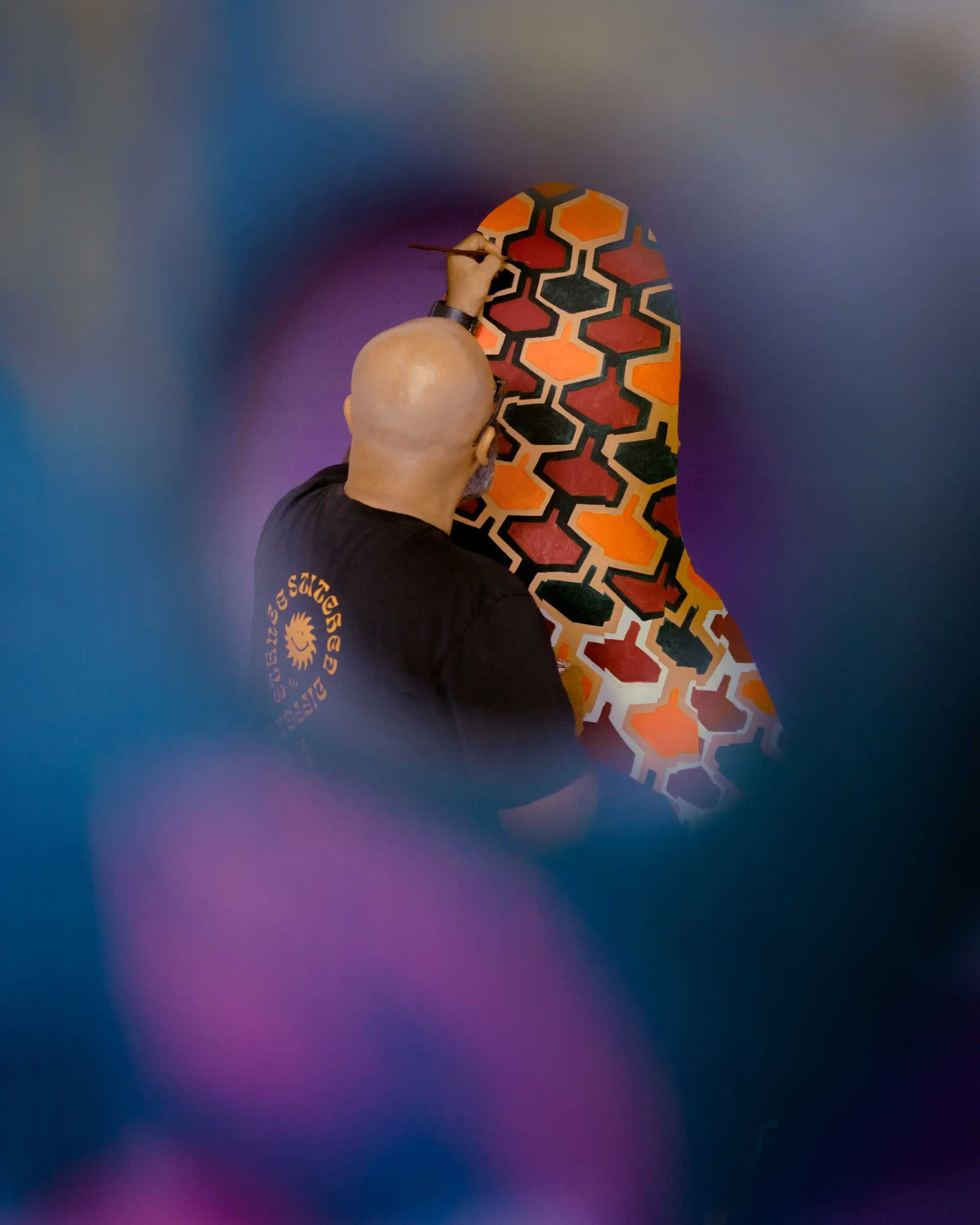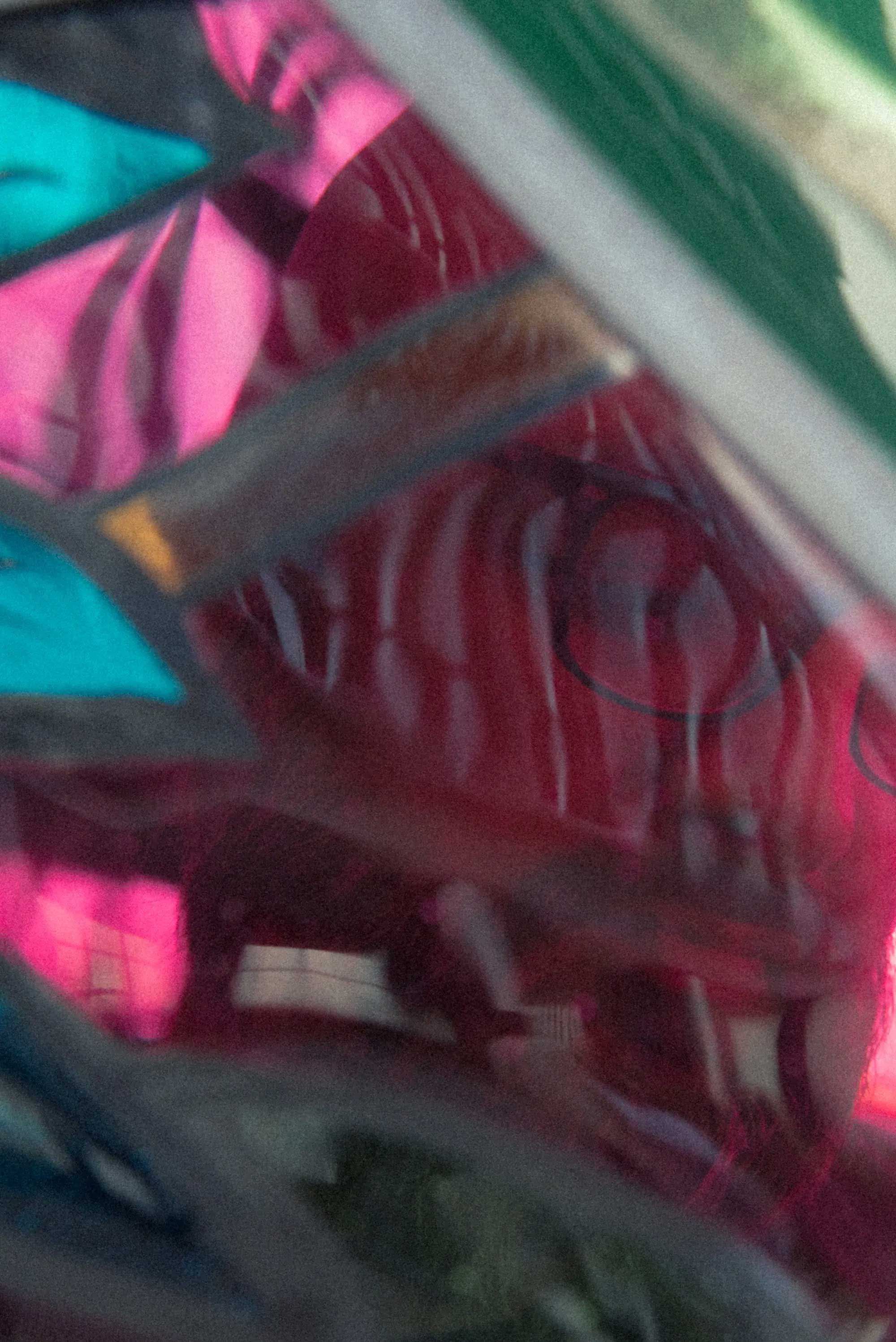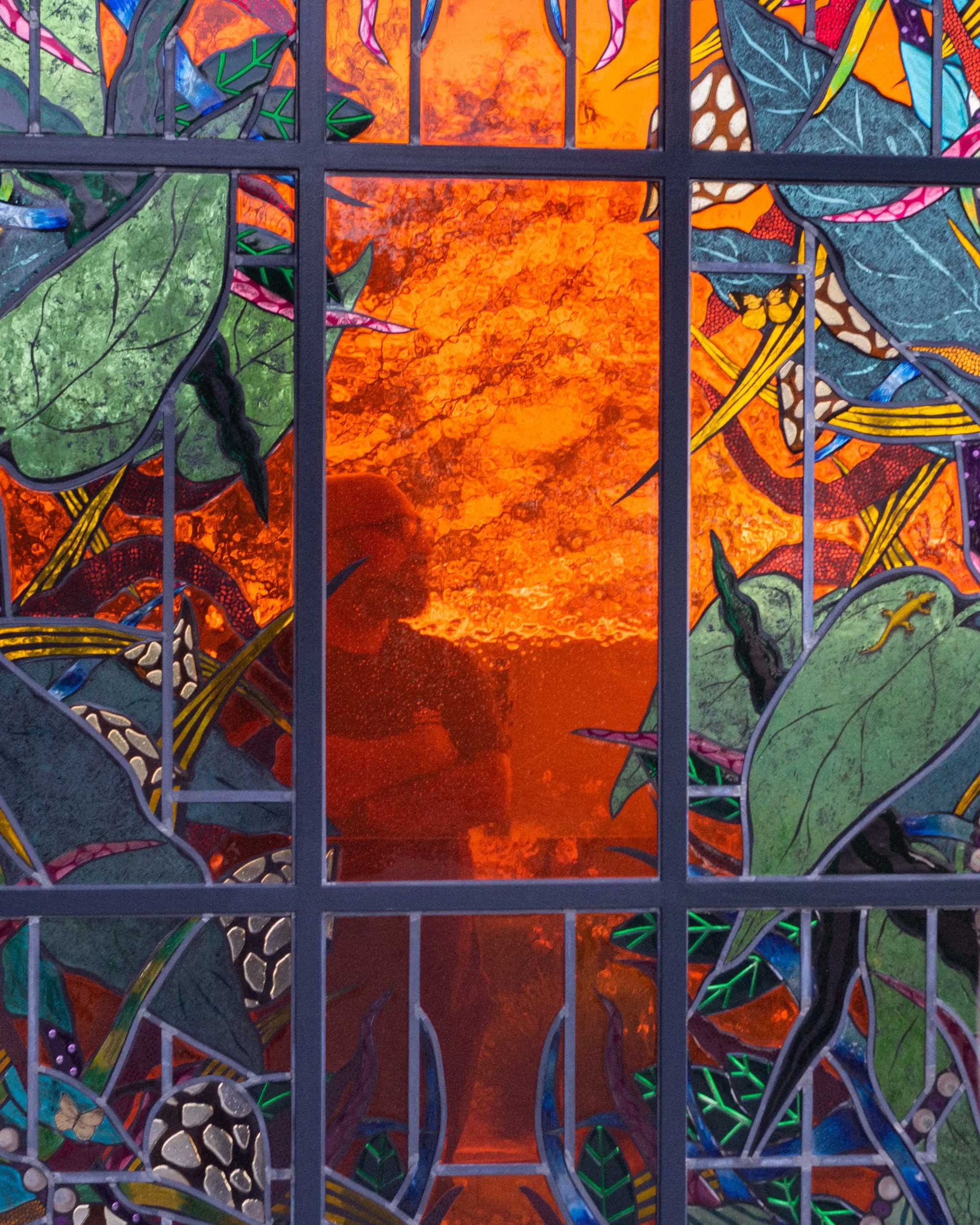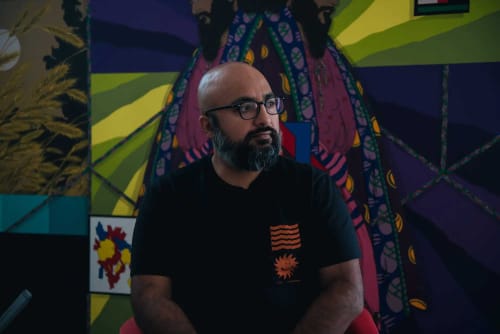REFUGEE, IMMIGRANT, AMERICAN
I was born in Tehran, Iran in 1979, which is the year that the Iranian revolution happened. And shortly after the revolution, a war broke out with Iraq that lasted eight years. So really, I was born in a lot of turmoil back to back.
One of my first memories is going to my grandma's house and playing in her bomb shelter. But I also have a lot of wonderful memories of going to the beach with my family and just having a normal childhood.
My parents decided to leave, they just thought the war was getting worse and worse. When we arrived in America, we had about $72 to our names. And it was really hard because my parents were [in their] late twenties, early thirties, they had a young kid and they [left] a good life in Iran - a middle class, happy life. And when we came here, we had to start from scratch.
I watched my parents for the first 15, 20 years of being in America, rebuilding every little thing they had - so having multiple jobs, living in a roach-infested apartment, being on welfare for the first few months that we were here. And little by little, they built their life back. Watching them struggle really instilled the work ethic in me that I don't think I've ever given up.
My dad's kind of like the stereotypical American dream. He was the manager of a Domino's Pizza and he ended up buying an Italian restaurant that made and delivered pizzas. And he's had that business for 30 years at this point, he built it.
It's made it really hard to be lazy. Every time I feel lazy, I think about my dad working 18 hours every day for seven days a week for years and years. So it just pushes me to work harder.
SEEKING IDENTITY
I'm an only child, so I've always been fiercely independent. I would spend a lot of time by myself as a kid and I felt right at home doing that. I gravitated towards very independent things. Like I was never into team sports. I skateboarded - because it's something you can do by yourself.
I was really into skateboarding. Through skateboarding, I got introduced to graffiti. And I was very involved in graffiti for pretty much my entire youth, from the ages of 12 to 25. I started taking art classes to get better at graffiti. And then at some point, I was like, "Hey, I'm kind of good with art." I got some encouragement from one of my teachers (shout out to Ms. Hammer). The more I did it, the more I liked it.

I sat my parents down, I was like, "Guys, I'm going to be an artist. I'm gonna go to this school. I heard I can get a scholarship. I'm gonna sell paintings for a living one day." And they were cool with that. [They told me] "You can do whatever you want, as long as you're successful at it. Work hard."
When I was an undergrad, I started making work about my identity and being called a cultural hybrid. I started making work about that my junior year in college. I had a lot of success with that, and that's how I got into grad school. But I was so young that I didn't realize that I was making really authentic work that only I could make. And that's why it was successful.
I got a Jacob Javits Fellowship at UCLA, which had an all star faculty. But because there were all these celebrity teachers, that really fucked with my head, and I lost direction. Somebody would say, "Add text to your work." And I would think, "Well, I don't know anything. You're a living legend. I'll listen to you." I just kept doing all this stuff to my work. And I stopped trusting myself. So by the time I graduated, I was making art about nothing.
It took seven or eight years, purging all of that out of my system. And now I'm making a more mature version of what I was making in undergrad, exploring identity.
ARTISTRY AND PURPOSE
I'm a very curious person, and I like to discover things that nobody else has seen or done or is interested in. There's an archeological aspect to what I do in my artwork, where I find a lot of pleasure and satisfaction in digging into something that I don't know about and uncovering some sort of truth or beauty or idea, and then sharing it with people.

Amir H. Fallah, You Will Always Live Between Borders, 2022. Acrylic on canvas, 96 x 72 in.
As a cultural hybrid, there's always this constant feeling of the other, or of not fully belonging. A lot of that bled into my work - from how images from different cultures are combined to the way I paint, how I'll combine very traditional glaze painting in some areas of the work with areas where the paint is made to look very graphic and illustrative. The result is something that's fully rendered, and this clashing of these formal ways of making imagery mimics the clashing of cultures and the clashing of identity that I feel. So the work really is a residue of just how I feel day to day living in and existing in America.
I love to uncover hidden gems. Most museums, public libraries, and universities have these vast digital archives of visual ephemera. I'll go through these archives and I'll pull images that I find interesting and I'll put them in a digital folder. So everything from ancient Persian miniatures, to advertising, to skateboard graphics, to etchings from the 14th century; just images that I connect with. When the time comes to make a painting, I'll sift through these archives and construct a digital collage of sorts that will be the basis of these paintings.
I like that cultural clash that happens, because so much of the work is about that. It's about this collision of high and low, old and new, east and west.
A lot of my work deals with dark or serious issues, but I use formal elements like ornamentation, decoration…a lot of these formal elements are made to almost conceal or complicate the issue at hand. I almost want to seduce the viewer into a painting by making a beautiful image, but then talk about more complex issues.
A lot of the newer work I'm making deals with my new experience of being a father mixed in with my experience of growing up in America as an immigrant and as a refugee. How do I create works that help me figure out how to raise him and what I want to instill in him? What can I leave behind for him to make sense of the world, all the beautiful things in life but also all the strife, chaos, racism, sexism, and social issues that we deal with every day?
If you look at [my work], you wouldn't know that they're for my son, they're more like universal themes, right? So people can connect with them in their own way. I always start with a super personal message, but then try to make it broad enough that other people can connect to it on their own terms.
Looking Forward
My biggest goal these days is to do really big, large ambitious museum projects. Those are the most fulfilling, where I can show a large group of works together to tell a loose story or narrative. I've always wanted to have a show at the Hirshhorn Museum in D.C. That was the first museum I ever visited when I came to America, and it was the first time I interacted with contemporary art. And so it holds a special place for me.
To a greater audience, my paintings are about what it is to be a human today. My goal is always to make art about the times that we live in, filtered through my own life experience. Because that's the experience that I know best.

I think at the end of the day, I want to be able to leave something behind of value. I want to feel like I worked really hard during my life and it meant something. I want to leave something behind for my son, and for other people like me, that they would be able to connect with it on some level. I want my work to be a marker for this time that we're living in.
I'm just super ambitious. I don't want to just be a good artist in LA. I want to have an impact. When I die, I want the work to mean something.
I really think it comes from being an immigrant, honestly. I wake up every morning hungry.
Finding Identity
Identity can be complicated. It can be messy, and it can be complex. You can choose to create your own identity and find your own way that you fit into the world.


